Picture comprehension strengthens foundational literacy skills, ignites the imagination, and builds confidence for future learning.
Picture Comprehension for Class 3 (1/25)
Look at the picture carefully. Answer any questions asked about the picture

What do you see in the picture?
Answer: A corn on the cob.
Daily Test - Attempt Now
What color is the corn?
Answer: Yellow.
What shape is the corn?
Answer: Cylindrical.
Can you count the kernels of corn?
Answer: No, there are too many kernels to count.
What part of the corn plant do we eat?
Answer: The kernels.
Advanced Questions:
What part of the corn plant is the cob?
Answer: The cob is the part of the corn plant that holds the kernels.
What are the tiny bumps on the cob called?
Answer: The tiny bumps on the cob are called kernels.
Copyright Notice:📚 Teachers and students are granted permission to use, reproduce, and distribute this content solely for educational and non-commercial purposes. 🚫 Unauthorized copying, distribution, or reproduction for commercial purposes is strictly prohibited. Any infringement may result in legal action.
What can we make with corn?
Answer: We can eat corn on the cob, popcorn, cornbread, and many other foods!
Picture Comprehension for Class 3 (2/25)
Look at the picture carefully. Answer any questions asked about the picture
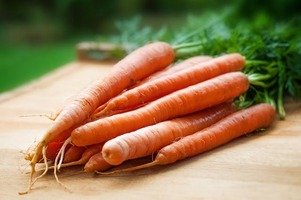
What do you see in the picture?
Answer: A bunch of carrots on a wooden table.
What color are the carrots?
Answer: Orange.
How many carrots are there?
Answer: There are several carrots, but it is difficult to say exactly how many.
Are the carrots big or small?
Answer: The carrots are different sizes. Some are big and some are small.
Advanced Questions:
What kind of vegetable is a carrot?
Answer: A carrot is a root vegetable.
What part of the carrot plant do we eat?
Answer: We eat the root of the carrot plant.
What do carrots taste like?
Answer: Carrots can taste sweet or crunchy.
What is a healthy food you can make with carrots?
Answer: You can make carrot juice, soup, or salad.
What are carrots good for?
Carrots are a good source of vitamins A and C. Vitamin A helps us see in the dark and vitamin C helps our bodies fight off infection.
Picture Comprehension for Class 3 (3/25)
Look at the picture carefully. Answer any questions asked about the picture
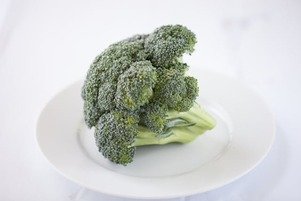
What do you see in the picture?
Answer: You see a piece of broccoli on a white plate.
What color is the broccoli?
Answer: The broccoli is mostly green, with some brown and white florets.
What is the broccoli sitting on?
Answer: The broccoli is sitting on a white plate.
What shape is the plate?
Answer: The plate is round.
Advanced Questions:
What part of the broccoli plant do we eat?
Answer: We eat the flowerets of the broccoli plant.
What is broccoli related to?
Answer: Broccoli is related to cauliflower, kale, and cabbage. They are all part of the Brassica family of vegetables.
What are some of the vitamins and minerals that broccoli has?
Answer: Broccoli is a good source of vitamins A, C, and K, as well as fiber and potassium.
How can broccoli be cooked?
Answer: Broccoli can be steamed, boiled, roasted, or stir-fried.
Picture Comprehension for Class 3 (4/25)
Look at the picture carefully. Answer any questions asked about the picture

What do you see in the picture?
Answer: You see three bell peppers of different colors.
What colors are the peppers?
Answer: The peppers are red, yellow, and green.
What shape are the peppers?
Answer: The peppers are bell-shaped.
Are the peppers the same size?
Answer: It is difficult to tell from the picture, but the peppers appear to be similar in size.
Advanced Questions:
What part of the plant is a pepper?
Answer: A pepper is a fruit. It grows on a flowering vine plant.
What are some other colors that peppers can be?
Answer: Peppers can be green, red, yellow, orange, purple, and even black.
What are some ways that peppers can be eaten?
Answer: Peppers can be eaten raw, cooked, or pickled. They can be added to salads, sandwiches, stir-fries, and many other dishes.
Picture Comprehension for Class 3 (5/25)
Look at the picture carefully. Answer any questions asked about the picture
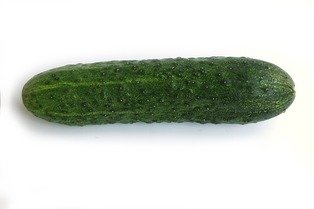
What do you see in the picture?
Answer: You see a green cucumber sitting on a white surface.
What color is the cucumber?
Answer: The cucumber is green.
Advanced Questions:
What part of the plant is a cucumber?
Answer: A cucumber is a fruit. It grows on a flowering vine plant.
What are some other colors that cucumbers can be?
Answer: While most cucumbers are green, they can also be yellow, orange, or even white.
What is a fun fact about cucumbers?
Answer: Cucumbers are mostly water! Up to 95% of a cucumber’s weight is water.
How can we eat cucumbers?
Answer: Cucumbers can be eaten raw, pickled, or cooked. They can be added to salads, sandwiches, soups, and many other dishes.
Picture Comprehension for Class 3 (6/25)
Look at the picture carefully. Answer any questions asked about the picture
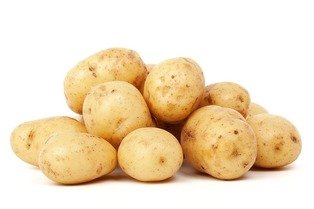
What do you see in the picture?
Answer: A pile of potatoes.
What color are the potatoes?
Answer: The potatoes are mostly brown.
How many potatoes are there?
Answer: There are several potatoes, but it is difficult to say exactly how many.
Advanced Questions:
What part of the plant is a potato?
Answer: A potato is a tuber, which is a special underground stem that stores food for the plant.
What are some different colors that potatoes can be?
Answer: Potatoes can be brown, white, yellow, red, and purple.
Picture Comprehension for Class 3 (7/25)
Look at the picture carefully. Answer any questions asked about the picture
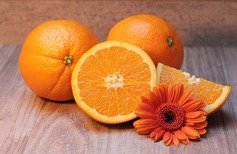
What do you see in the picture?
Answer: A group of oranges.
What color are the oranges?
Answer: The oranges are orange.
What shape are the oranges?
Answer: The oranges are round.
Is the table made of wood or metal?
Answer: The table appears to be made of wood based on its texture and color.
Advanced Questions:
What part of the plant is an orange?
Answer: An orange is a fruit. It grows on a citrus tree.
What are some other citrus fruits that are similar to oranges?
Answer: Some other citrus fruits that are similar to oranges are lemons, grapefruits, and tangerines.
What is a fun fact about oranges?
Answer: Oranges are a good source of vitamin C, which is important for keeping us healthy.
How can we eat oranges?
Answer: Oranges can be eaten fresh, juiced, or used in baking.
Picture Comprehension for Class 3 (8/25)
Look at the picture carefully. Answer any questions asked about the picture
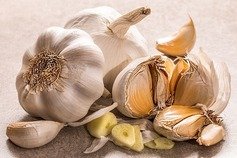
What do you see in the picture?
Answer: You see a bunch of garlic cloves.
What color are the garlic cloves?
Answer: The garlic cloves are white or ivory-colored, with some brown tinges.
Advanced Questions:
What part of the garlic plant do we eat?
Answer: We eat the cloves of the garlic plant.
What is a fun fact about garlic?
Answer: Garlic is a type of bulb vegetable, but it is also considered an herb.
What are some ways that garlic can be eaten?
Answer: Garlic can be eaten raw, cooked, or roasted. It is a common ingredient in many dishes around the world.
What are some of the health benefits of garlic?
Answer: Garlic is thought to have many health benefits, including boosting the immune system and reducing blood pressure.
Picture Comprehension for Class 3 (9/25)
Look at the picture carefully. Answer any questions asked about the picture

What is lying on the surface in the picture?
Answer: Ginger root.
What color is the ginger root?
Answer: The ginger root is brown and beige.
What color is the background in the picture?
Answer: The background is light-colored, possibly white or light gray.
Are there any other objects in the picture besides the ginger root?
Answer: No, there are no other objects visible in the picture besides the ginger root.
Can you describe the texture of the ginger root?
Answer: The ginger root looks bumpy and rough, with a slightly shiny surface.
Advanced Questions:
What part of the ginger plant do we eat?
Answer: We eat the rhizome of the ginger plant, which is the underground stem that looks like a root.
What do you think the ginger root might be used for?
Answer: Ginger can be used in cooking, making tea, or for medicinal purposes. be candied or pickled.
Picture Comprehension for Class 3 (10/25)
Look at the picture carefully. Answer any questions asked about the picture
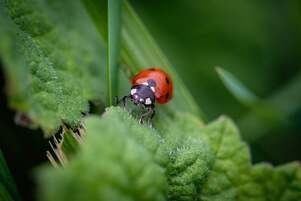
What do you see in the picture?
Answer: A ladybug sitting on a green leaf.
What color is the ladybug?
Answer: The ladybug is red with black spots.
Advanced Questions:
What is another name for a ladybug?
Answer: A ladybug is also called a ladybird beetle.
What do ladybugs eat?
Answer: Ladybugs eat aphids and other plant-eating pests.
Why are ladybugs helpful?
Answer: Ladybugs help to control the population of aphids, which can protect plants from being damaged.
Do you know where ladybugs live?
Answer: Gardens, forests, and meadows.
Picture Comprehension for Class 3 (11/25)
Look at the picture carefully. Answer any questions asked about the picture
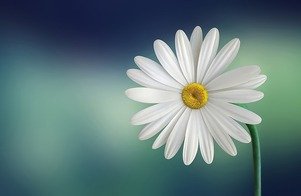
What do you see in the picture?
Answer: You see a white daisy with a yellow center.
What is the flower called?
Answer: The flower is called a daisy.
What color are the petals of the daisy?
Answer: The petals of the daisy are white.
What color is the center of the daisy?
Answer: The center of the daisy is yellow.
What color is the stem of the daisy?
Answer: The stem of the daisy is green.
Advanced Questions:
Do all daisies have white petals?
Answer: No, not all daisies have white petals. Daisies can also have yellow, pink, or red petals.
What is the name of the yellow part in the center of the daisy?
Answer: The yellow part in the center of the daisy is called the disc floret.
Picture Comprehension for Class 3 (12/25)
Look at the picture carefully. Answer any questions asked about the picture
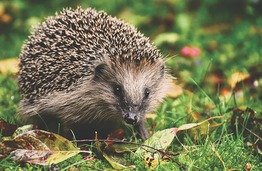
What animal is in the picture?
Answer: The animal in the picture is a hedgehog.
What color is the hedgehog?
Answer: The hedgehog is brown and white.
What is the hedgehog standing on?
Answer: The hedgehog is standing on grass.
Does the hedgehog have any special features?
Answer: Yes, the hedgehog has spikes on its back.
Advanced Questions:
What do hedgehogs eat?
Hedgehogs are insectivores, Hedgehogs eat bugs like beetles and worms. Sometimes they munch on snails and other small creatures.
Where do hedgehogs live?
Hedgehogs live in places like forests, gardens, and parks. You can find them in Europe, Asia, and Africa.
Are hedgehogs nocturnal or diurnal animals?
Answer: Hedgehogs are nocturnal animals, which means Hedgehogs are awake at night. They sleep during the day and come out to hunt for food when it’s dark.
How do hedgehogs protect themselves from predators?
Answer: Hedgehogs use their spikes to protect themselves from predators. When they are threatened, they roll up into a ball, which protects their body from being attacked.
Picture Comprehension for Class 3 (13/25)
Look at the picture carefully. Answer any questions asked about the picture
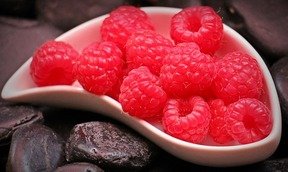
What do you see in the picture?
Answer: A bowl of raspberries.
What color are the raspberries?
Answer: The raspberries are red.
What is the shape of the raspberries?
Answer: The raspberries are round.
Advanced Questions:
What do you think raspberries taste like?
Answer: Raspberries are sweet and tart.
What can you make with raspberries?
Answer: You can eat raspberries plain, or you can use them to make jam, juice, or pie.
What are some vitamins that raspberries have?
Answer: Raspberries are a good source of vitamins C and K.
Picture Comprehension for Class 3 (14/25)
Look at the picture carefully. Answer any questions asked about the picture

What is the main object in the picture?
Answer: A glass filled with coffee beans.
What is the color of the coffee beans?
Answer: The coffee beans are brown.
What is the cup made of?
Answer: The cup is made of glass.
What is the shape of the cup?
Answer: The cup is cylindrical.
Advanced Questions:
Where do coffee beans come from?
Answer: Coffee beans come from coffee plants.
What do we make with coffee beans?
Answer: Coffee beans are roasted and ground to make coffee.
What are the health benefits of drinking coffee?
Answer: Coffee contains caffeine, which is a stimulant that can help people feel more awake and alert.
Picture Comprehension for Class 3 (15/25)
Look at the picture carefully. Answer any questions asked about the picture
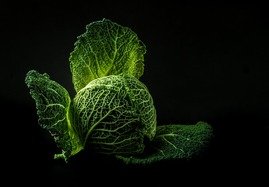
What is the main thing you see in the picture?
Answer: A cabbage.
What color is the cabbage?
Answer: The cabbage is green.
What shape is the cabbage?
Answer: The cabbage is round.
Advanced Questions:
What part of the cabbage plant do we eat?
Answer: We eat the leaves of the cabbage plant.
What is cabbage good for?
Answer: Cabbage is a good source of vitamin C and fiber.
How can we cook cabbage?
Answer: Cabbage can be cooked by boiling, sauteing, and roasting.
Picture Comprehension for Class 3 (16/25)
Look at the picture carefully. Answer any questions asked about the picture
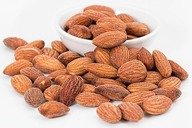
What is the main object in the picture?
Almonds.
What are they in?
A bowl.
Are there more almonds outside the bowl?
Yes.
What color are the almonds?
Brown.
What shape are they?
Oval.
Advanced Questions:
What kind of nut is an almond?
Answer: Almonds are a type of drupe, which is a fruit with a hard outer shell and a single seed inside.
Where do almonds grow?
Almonds grow on almond trees, which are native to the Middle East and Central Asia. [Source: Wikipedia]
What are some of the health benefits of eating almonds?
Almonds are a good source of protein, fiber, healthy fats, vitamins, and minerals.
Picture Comprehension for Class 3 (17/25)
Look at the picture carefully. Answer any questions asked about the picture
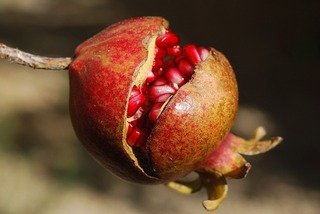
What is it?
A pomegranate.
What color is it?
Red.
What is on the bottom?
A branch.
Is the stem green or brown?
It appears to be brown.
Are there any leaves on the branch?
No.
Is the pomegranate round or oval?
It appears to be round.
Is the pomegranate whole or cut open?
It is cut open.
Advanced Questions:
Where do pomegranates grow?
Answer: Pomegranates grow in warm climates, such as the Mediterranean, Middle East, and Asia.
What are the seeds of a pomegranate called?
Answer: The seeds of a pomegranate are called arils.
What can you eat from a pomegranate?
Answer: You can eat the seeds of a pomegranate. They are juicy and sweet.
Picture Comprehension for Class 3 (18/25)
Look at the picture carefully. Answer any questions asked about the picture
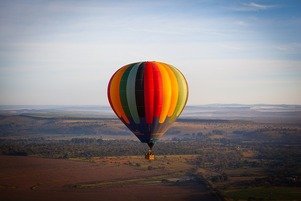
What do you see in the picture?
Answer: A hot air balloon.
What color is the hot air balloon?
Answer: The hot air balloon is colorful, with sections of red, yellow, orange, blue, and green.
Are there any birds in the picture?
Answer: No, there are no birds visible in the picture.
Advanced Questions:
What is the basket hanging below the hot air balloon called?
Answer: The basket hanging below the hot air balloon is called a gondola.
Where do hot air balloons typically take off from?
Answer: Hot air balloons typically take off from large, open areas like fields, parks, or airfields.
Picture Comprehension for Class 3 (19/25)
Look at the picture carefully. Answer any questions asked about the picture
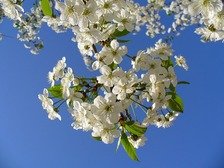
What is in the picture?
Answer: There are a bunch of white flowers in the picture.
What type of flower do you think is in the picture?
Answer: The flowers in the picture look like cherry blossoms.
What color is the sky?
Answer: The sky is blue.
Advanced Questions:
What season do you think it is in the picture? Why?
Answer: It is likely spring or summer in the picture. This is because cherry blossoms typically bloom in these seasons.
What do you think the flowers smell like?
Answer: Cherry blossoms have a sweet and delicate fragrance.
Can you name another white flower?
Answer: Many other flowers are white, such as daisies, lilies, and tulips.
Picture Comprehension for Class 3 (20/25)
Look at the picture carefully. Answer any questions asked about the picture
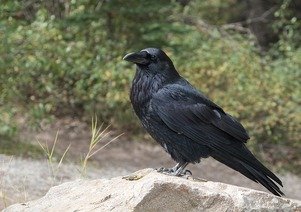
What is the main thing you see in the picture?
Answer: A black bird sitting on top of a rock.
What type of bird do you think this might be?
Answer: The bird in the picture looks like a crow.
What is the color of the bird?
Answer: The bird is black.
What is the bird sitting on?
Answer: The bird is sitting on a rock.
What is the color of the rock?
Answer: The rock is gray.
Advanced Questions:
What do crows typically eat?
Answer: Crows are omnivores, which means they eat both plants and animals.
Do crows make any sounds?
Answer: Crows can make a variety of sounds, including caws, croaks, and calls.
Picture Comprehension for Class 3 (21/25)
Look at the picture carefully. Answer any questions asked about the picture
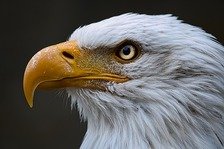
What do you see in the picture?
Answer: A bald eagle’s head.
What color is the bald eagle’s head?
Answer: The bald eagle’s head is white.
What color is the bald eagle’s beak?
Answer: The bald eagle’s beak is yellow.
What is behind the bald eagle?
Answer: The background is blurry, but it looks like there are trees and sky.
Advanced Questions:
What kind of bird is a bald eagle?
Answer: A bald eagle is a bird of prey. The bald eagle is the national bird of the United States.
Where do bald eagles live?
Answer: Bald eagles live in North America, near water bodies.
What do bald Eagles eat?
Answer: Bald eagles eat fish, small mammals, and birds.
What is another name for a bird’s beak?
Answer: A bill.
Picture Comprehension for Class 3 (22/25)
Look at the picture carefully. Answer any questions asked about the picture
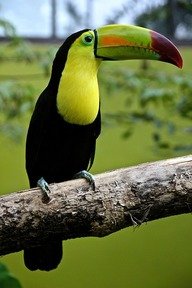
What do you see in the picture?
Answer: The picture shows a kind of bird perched on a branch.
What kind of bird is it?
It is a toucan.
What color is its body?
Its body is mostly black and its throat is yellow.
What is the toucan sitting on?
Answer: The toucan is sitting on a brown branch.
What is in the background?
The background is blurry and appears to be green foliage.
Is its beak open?
No, the toucan’s beak is closed.
Advanced Questions:
What is a toucan?
Answer: A toucan is a large, brightly colored bird with a very large beak.
What does a toucan’s beak do?
Answer: It helps the toucan reach fruit in the rainforest and crack open nuts and seeds.
What kind of diet does a toucan have?
Answer: Toucans are omnivores and eat fruit, insects, small animals, and eggs.
What is another name for a bird’s beak?
Answer: A bird’s beak can also be called a bill.
Picture Comprehension for Class 3 (23/25)
Look at the picture carefully. Answer any questions asked about the picture

What is it?
A swan.
What color is it?
White.
Is it swimming?
Yes.
What is on the water?
There are ripples in the water.
Is the swan near anything?
No, the swan is alone.
Can you see the swan’s feet?
No, the swan’s feet are underwater.
Advanced Questions:
Where do swans live?
Answer: They live in lakes, rivers, and wetlands.
What do swans eat?
They typically eat aquatic plants, seeds, insects, and small fish.
Picture Comprehension for Class 3 (24/25)
Look at the picture carefully. Answer any questions asked about the picture
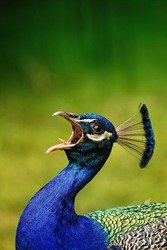
What is it?
A peacock.
What is its body color?
Blue.
What is behind the peacock?
There are green plants.
What is the color of the peacock’s beak?
Yellowish-orange.
Is its beak open?
Yes.
What is around its eye?
There is a yellow patch of bare skin around the peacock’s eye.
Are there any other birds in the picture?
No.
Can you see the peacock’s whole body in the picture?
Answer: No
What is the peacock doing?
The peacock’s mouth is open, so it might be calling.
Advanced Questions:
What are the male peacocks known for?
Answer: Male peacocks are known for their large, colorful tails, which they fan out in a display called a wheel to attract mates.
What do peacocks eat?
Answer: Peacocks are omnivores, they eat insects, seeds, fruits, and small animals.
What is another name for a male peacock?
Answer: A male peacock is also called a peafowl.
Picture Comprehension for Class 3 (25/25)
Look at the picture carefully. Answer any questions asked about the picture
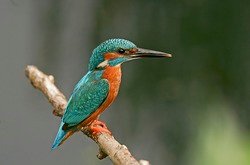
What kind of bird is it?
A kingfisher.
What color is its beak?
Black.
Is its beak long?
Yes.
Is its beak open?
No, the kingfisher’s beak is closed.
Does it have a crest?
No.
What is it sitting on?
A branch.
What is in the background?
Blurry foliage.
Advanced Questions:
Kingfisher bird type?
Small, colorful bird.
Kingfisher habitat?
Near water (rivers, lakes).
Kingfisher food?
Fish, insects.
Another name for beak?
Bill.
Also, Read
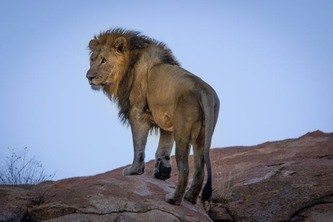
Picture Comprehension for Class 2
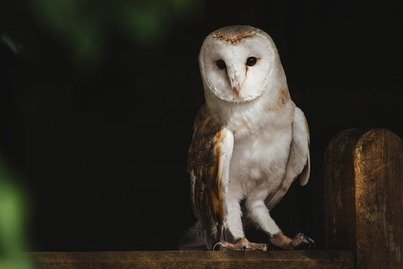
Picture Comprehension for Class 1

Reading Comprehension For Kindergarten

Comprehension Test for Class 3

